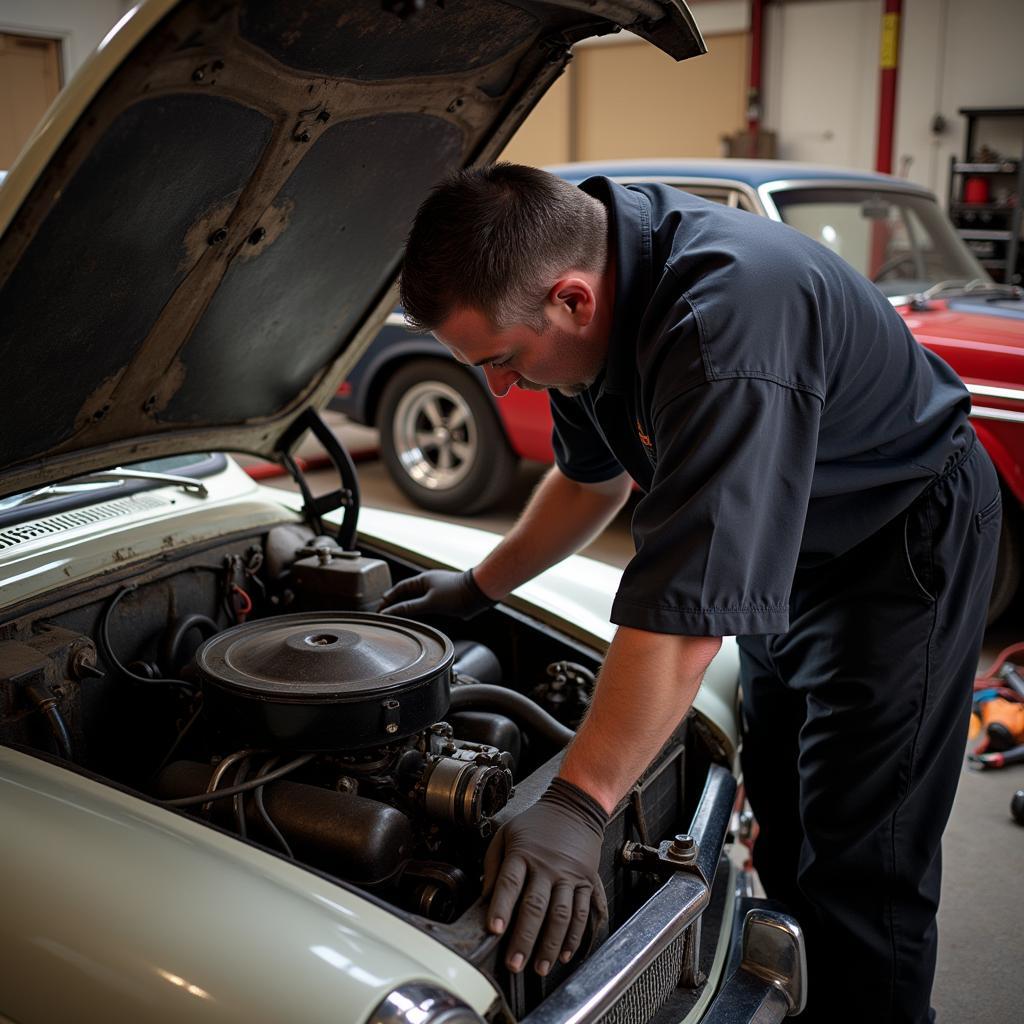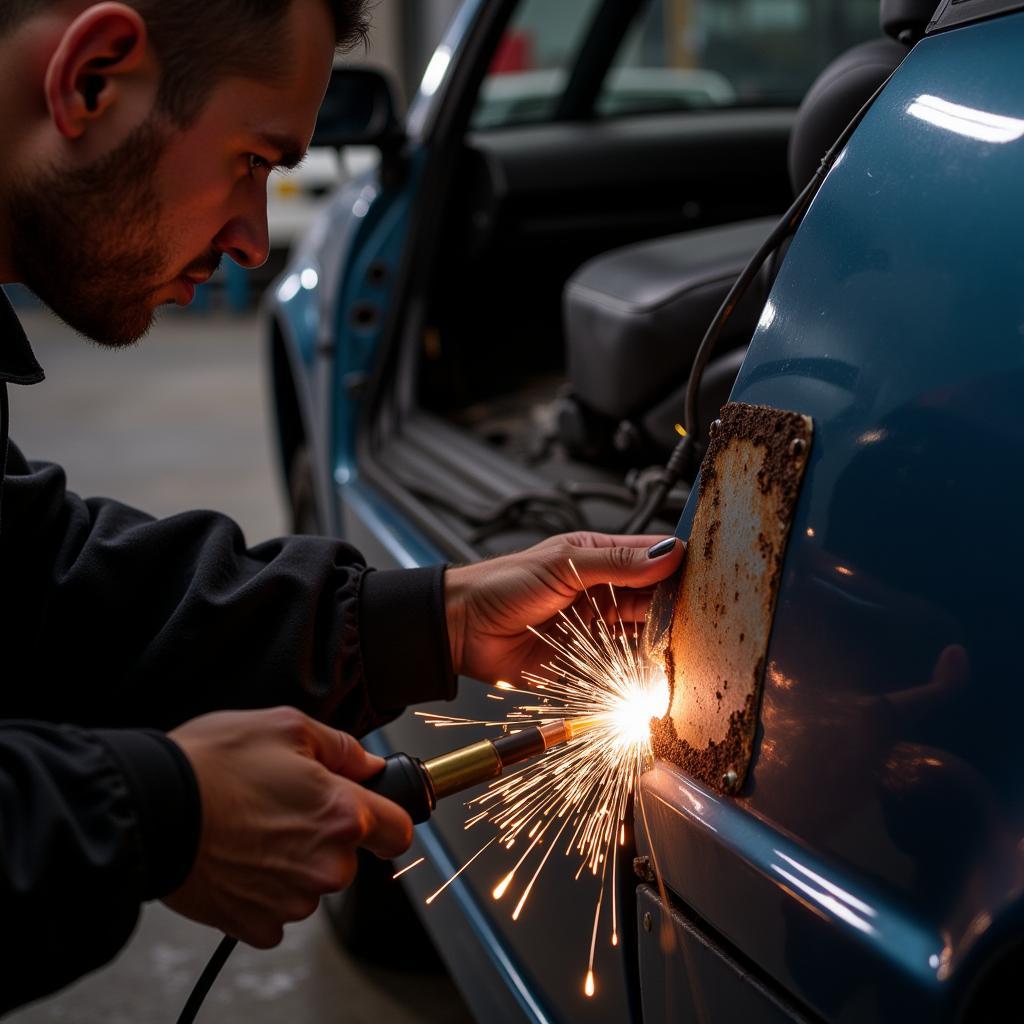A malfunctioning car charger port can be a real headache. Whether you’re relying on it for navigation, music, or, most importantly, charging your phone, a broken charger port can disrupt your daily drive. This guide will walk you through How To Fix A Charger Port In A Car, covering common issues and providing step-by-step solutions.
Common Charger Port Problems and Their Causes
Several issues can plague your car’s charger port. These range from simple fixes like a loose connection to more complex problems requiring professional help. Understanding the root cause is the first step towards fixing a charger port in a car.
- Loose Connection: Sometimes, the charger cable simply isn’t making proper contact with the port. This can be due to a worn-out cable, debris in the port, or a slightly bent connector.
- Frayed or Damaged Cable: A damaged charging cable is one of the most frequent culprits. Inspect your cable for any visible tears, bends, or exposed wires.
- Debris in the Port: Dust, lint, and other small particles can accumulate in the charger port, obstructing the connection.
- Fuse Issues: A blown fuse can cut off power to the charger port. This is less common but still worth checking.
- Internal Damage to the Port: In some cases, the internal components of the charger port itself might be damaged, requiring replacement or repair.
DIY Fixes for Your Car Charger Port
Before rushing to a mechanic, try these simple troubleshooting steps to fix a charger port in a car:
- Check the Obvious: Ensure the car is running or the accessory power is on. Try a different cable and device to rule out cable or device issues.
- Clean the Port: Use compressed air or a small, soft brush to gently remove any debris from the port. A toothpick can also be helpful but be extremely careful not to damage the contacts.
- Inspect the Fuse Box: Locate your car’s fuse box (usually under the dashboard or in the engine compartment) and consult your owner’s manual to identify the fuse related to the charger port. If the fuse is blown, replace it with a fuse of the same amperage.
- Try a Different Charger: Sometimes, the problem lies with the charger itself, not the port. Borrow a charger from a friend or use a different one you own to see if that resolves the issue.
When to Seek Professional Help
If the DIY fixes haven’t worked, it might be time to call in the pros. Here are some signs you need professional help to fix a charger port in a car:
- Physical Damage to the Port: If the port is visibly broken, bent, or loose, it likely needs replacement.
- Persistent Power Issues: If you’ve checked the fuse and the port is still not receiving power, there might be a deeper electrical issue.
- Unfamiliarity with Car Electronics: If you’re uncomfortable working with car electronics, it’s always best to leave it to a qualified technician.
“A loose connection is often the easiest fix, but internal damage can be tricky. If you’re unsure, get it checked out by a professional.” – John Smith, Automotive Electrical Engineer at Autotippro
How Much Does it Cost to Fix a Charger Port in a Car?
The cost to fix a charger port in a car can vary depending on the specific issue and the make and model of your vehicle. Simple fixes like cleaning or replacing a fuse can be relatively inexpensive, while replacing the entire port can cost more. It’s always a good idea to get a quote from a reputable mechanic before proceeding with any repairs.
Keeping Your Charger Port in Top Shape
Preventing future problems is always better than dealing with a broken charger port. Here are a few tips:
- Handle Cables with Care: Avoid yanking or bending the charging cable excessively.
- Keep the Port Clean: Regularly clean the port with compressed air or a soft brush to prevent debris buildup.
- Use Quality Chargers: Investing in high-quality chargers can reduce the risk of damage to the port.
“Regular maintenance can prevent most charger port problems. Just like any other part of your car, a little care goes a long way.” – Maria Garcia, Senior Automotive Technician at Autotippro
Conclusion
Fixing a charger port in a car can range from a simple DIY fix to a more complex repair. By following the steps outlined in this guide, you can often troubleshoot and resolve the issue yourself. However, if the problem persists or seems beyond your capabilities, don’t hesitate to seek professional assistance. For expert advice and assistance, contact AutoTipPro at +1 (641) 206-8880 or visit our office at 500 N St Mary’s St, San Antonio, TX 78205, United States.






Leave a Reply